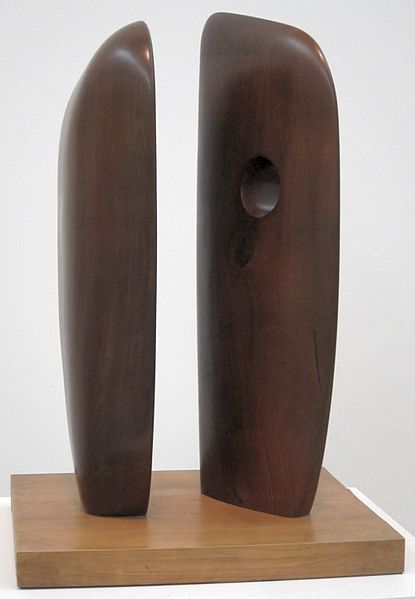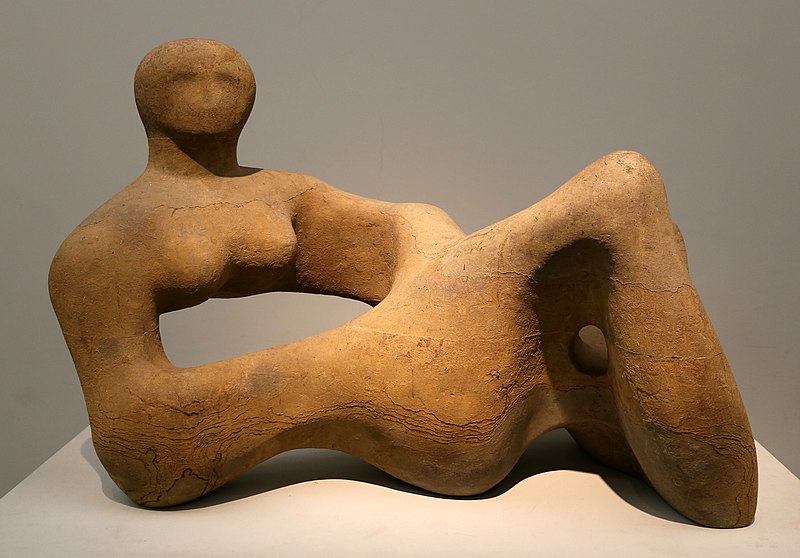Barbara Hepworth and Henry Moore
In 1933, the English artists Barbara Hepworth (1903-1975) and Henry Moore (1898-1986) and Paul Nash (1889-1946) along with the poet and critic Herbert Read (1893-1968) founded Unit One. Although short lived, this group promoted the use of hand-crafted Surrealist-influenced biomorphic forms in sculpture, brought new energy to British art in the 1930s, and exerted a lasting impact on British sculpture.
Hepworth made exquisitely crafted sculptures punctuated with holes so that air and light could pass through them. Forms in Echelon consists of two biomorphic shapes carved in highly polished wood. The artist merely described these sculptures as organic. She hoped that viewers would let their eyes play around them, letting their imaginations generate associations and meanings.

Moore also carved sculptural abstractions punctured by holes, although his sculptures were more obviously based on the human form. The African, Oceanic, and Pre-Columbian sculpture that he saw at the British Museum had a more powerful impact on his developing aesthetic than his training at the college. He felt that the work of artists beyond the Western tradition showed a greater respect for the inherent qualities of materials such as stone or wood than that of Western artists.

The reclining female nude is the dominant theme of Moore’s art. The massive simplified body in Recumbent Figure refers to the chacmool, a reclining human form in Toltec and Maya art. While certain aspects of the human body are clearly defined in this piece, such as the head, breasts, supporting elbow, and raised knee, other parts seem to flow together into an undulating mass suggestive of a hilly landscape. The cavity at the center inverts our expectations about the solid and void. In 1937, Moore wrote: “A hole can itself have as much shape-meaning as a solid mass.”[1]
- Marilyn Stokstad, Art History, vol. 2, 4th ed, (Upper Saddle River, NJ: Prentice Hall: 2011), 1060-1061. ↵

